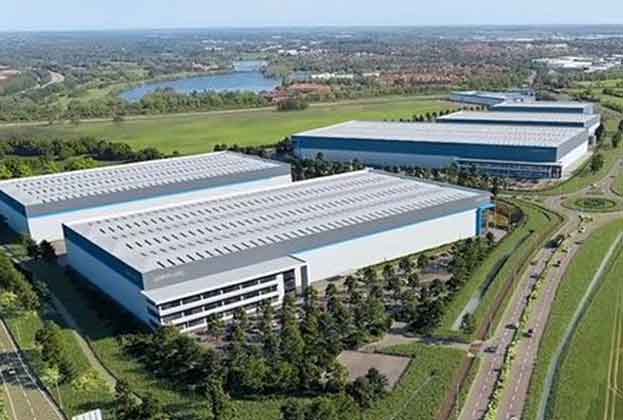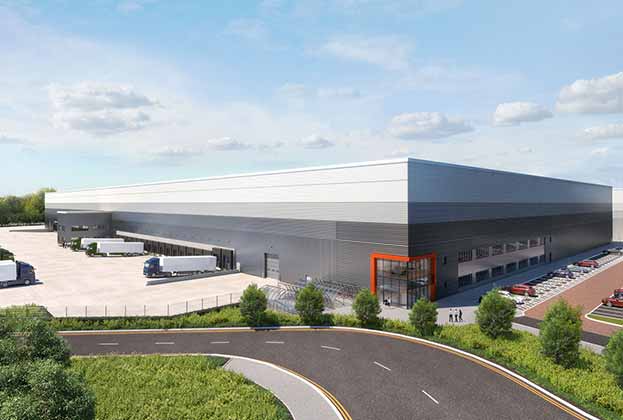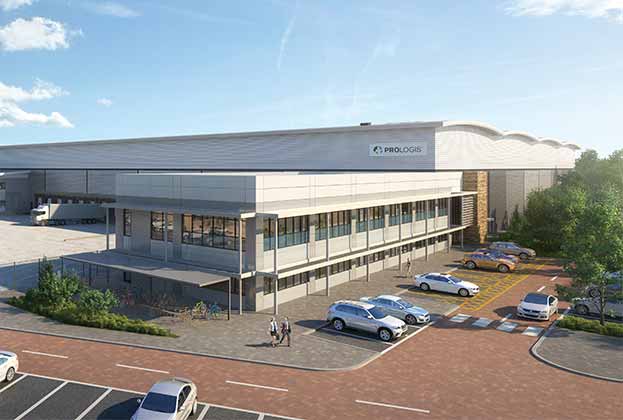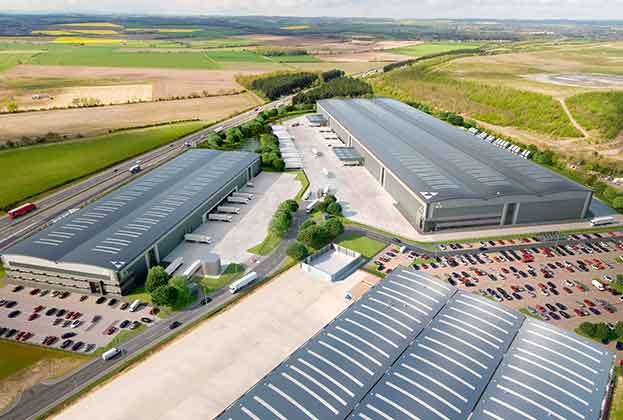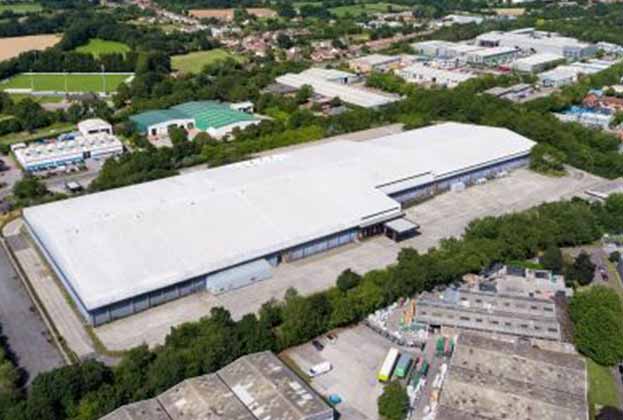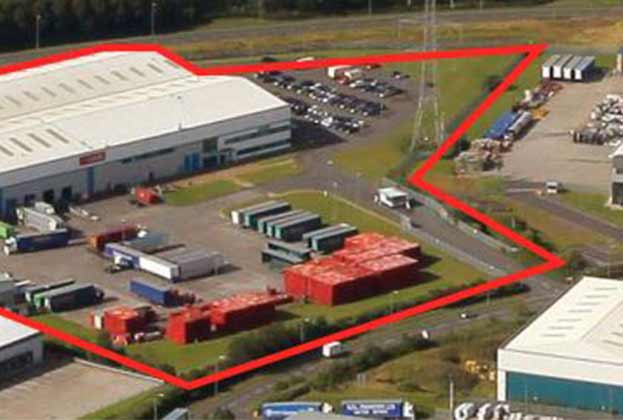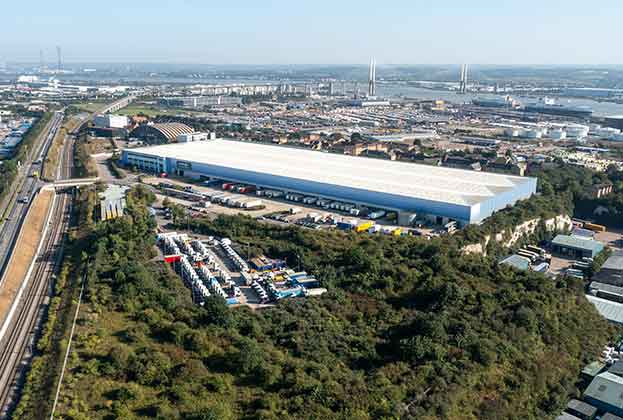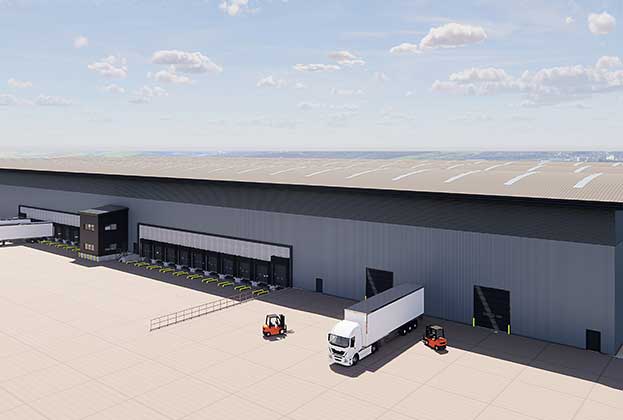Vacancy rate stands at 3.07%; 57% of supply is poor quality
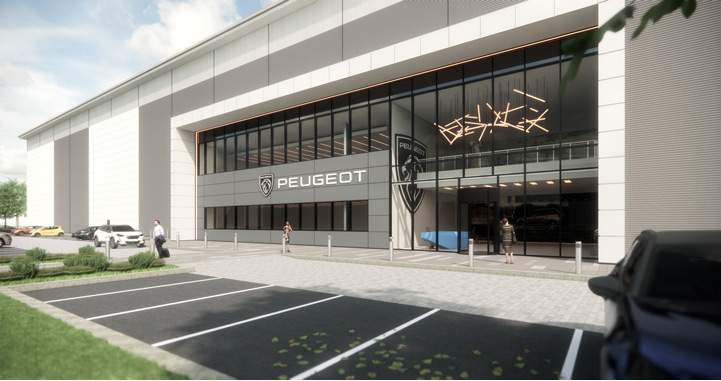
Hooton Park, where Stoford will deliver a 668,000 sq ft unit for automotive maker Stellantis
Take-up in the North West reached 4.22m sq ft in 2022 through 15 transactions. Demand continues to revolve around better quality units, and we’re now seeing heightened interest for existing stock from a diverse range of occupiers. This increased competition has caused net-effective rents through decreased incentives
Jon Atherton, Director, Manchester
Supply
The supply of warehouse space has fallen by 23% in the past 12 months to stand at 2.65m sq ft across 13 units. Using the three-year average annual take-up of 5.39m sq ft, this equates to just 0.47 years’ worth of supply in the region.
In terms of Grade, 43% of the available space is Grade A, 29% is Grade B, and 28% is Grade C. A large proportion of the Grade B and C stock do not currently reach the EPC standards set out by the government. Consequently, these units will need to undergo comprehensive refurbishments in order to be lettable in the future.
Looking at the unit count, the supply is skewed towards the smaller size bands, 69% are within the 100,000–200,000 sq ft size band, 23% are within the 200,000–300,000 sq ft size band, and 8% are over 500,000 sq ft.
The vacancy rate continues to remain at record low levels and won’t be relieved any time soon as units under construction are now frequently let before practical completion. There is a clear case to suggest that the actual rental growth will far exceed the forecast 19.4% over the next five years.
Take-up
Take-up in H1 2022 has reached 4.22m sq ft across 15 transactions, this is 103% above the long-term H1 average take-up.
In 2022, 32% of space transacted has been Grade A speculatively developed space, 51% has been Grade A space and the remainder Grade C space, demonstrating a clear preference toward better quality space. There are clear cost benefits for occupiers residing in Grade A buildings due to their greater energy efficiency, we are seeing this as one of the main drivers towards Grade units.
As certainty returned to the market following the pandemic, we have seen lease lengths increase within the North West. Mirroring this trend, we have seen a rise in the amount of built-to-suit transactions compared to H1 2021. In 2022, 40% of take-up has been for built-to-suit units, 33% has been for speculatively developed space, and the remainder has been for second-hand space. In terms of deal count, there have been seven transactions within the 100,000–200,000 sq ft size band, two within the 200,000–300,000 sq ft size band, four within the 300,000–400,000 sq ft size band and two over 500,000 sq ft.
Development pipeline
There are currently six units being developed, totalling 1.94m sq ft. There are three within the 100,000–200,000 sq ft size band, one in the 300,000–400,000 sq ft size band, one in the 400,000–500,000 sq ft size band, and one over 500,000 sq ft.
Read the articles within Big Shed Briefing below.
.jpg)
